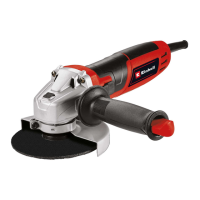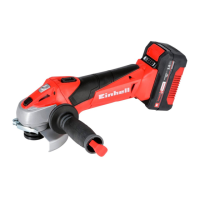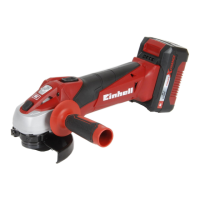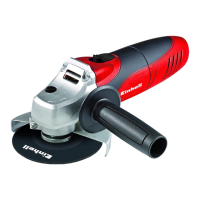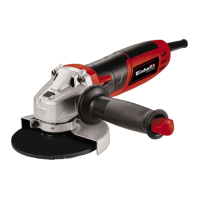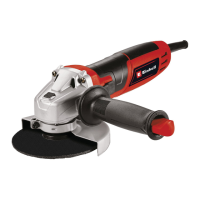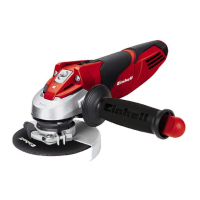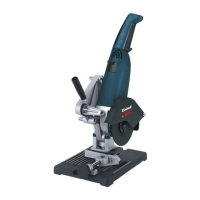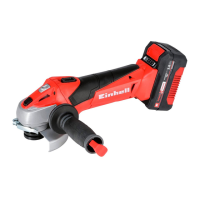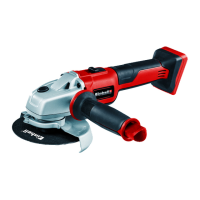GB
- 7 -
5.2 Setting the guard (Fig. 3)
Warning!
•
Switch off the tool. Pull the power plug.
•
Adjust the guard (4) to protect your hands
so that the material being ground is directed
away from your body.
•
The position of the guard (4) can be adjusted
to any specific working conditions. Undo the
screw (a) and turn the cover (4) into the requi-
red position.
•
Ensure that the guard (4) correctly covers the
gear wheel casing.
•
Retighten the screw (a).
•
Ensure that the guard (4) is secure.
Take care that the safety device is secure.
Never use the angle grinder without the
guard.
5.3 Test run for new grinding Wheels
Allow the right-angle grinder to run in idle for at
least 1 minute with the grinding or cutting wheel
fi tted in place. Vibrating wheels are to be replaced
immediately.
6. Operation
6.1 Switch (Fig. 4)
The angle grinder comes with a safety switch
which is designed to prevent accidents. To switch
on, push the slide switch (a) to the right while at
the same time pushing the ON/OFF switch (2)
forwards and depressing. To switch off the angle
grinder, depress the button (2) at the back. The
switch (2) will jump back into its starting position.
Wait until the machine has reached its top
speed. You can then position the angle grin-
der on the workpiece and machine it.
6.2 Changing the grinding wheels (Fig. 5)
Use the face spanner (5) supplied to change the
grinding wheels.
Warning!
Pull out the power plug.
•
Simple wheel change by spindle lock:
•
Press the spindle lock and allow the grinding
wheel to latch in place.
•
Open the flange nut with the face spanner.
•
(Fig. 5)
•
Change the grinding or cutting wheel and
tighten the flange nut with the face spanner.
Notice!
Only ever press the spindle lock when the
motor and grinding spindle are at a stand-
still! You must keep the spindle lock pressed
while you change the wheel!
For grinding or cutting wheels up to approx. 3 mm
thick, screw on the fl ange nut with the fl at side
facing the grinding or cutting wheel.
6.3 Flange arrangements when using grin-
ding wheels and cutting wheels (Fig. 6-9)
•
Flange arrangement when using a de-
pressed-centre or straight grinding wheel
(Fig. 7)
•
a) Clamping flange
•
b) Flange nut
•
Flange arrangement when using a de-
pressed-centre cutting wheel (Fig. 8)
•
a) Clamping flange
•
b) Flange nut
•
Flange arrangement when using a straight
cutting wheel (Fig. 9)
•
a) Clamping flange
•
b) Flange nut
6.4 Motor
It is vital for the motor to be well ventilated during
operation. Be sure, therefore, to keep the ventilati-
on holes clean at all times.
Anl_TC_AG_115_SPK7.indb 7Anl_TC_AG_115_SPK7.indb 7 25.02.16 08:4225.02.16 08:42
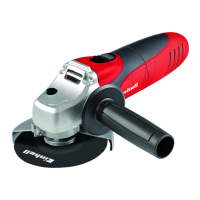
